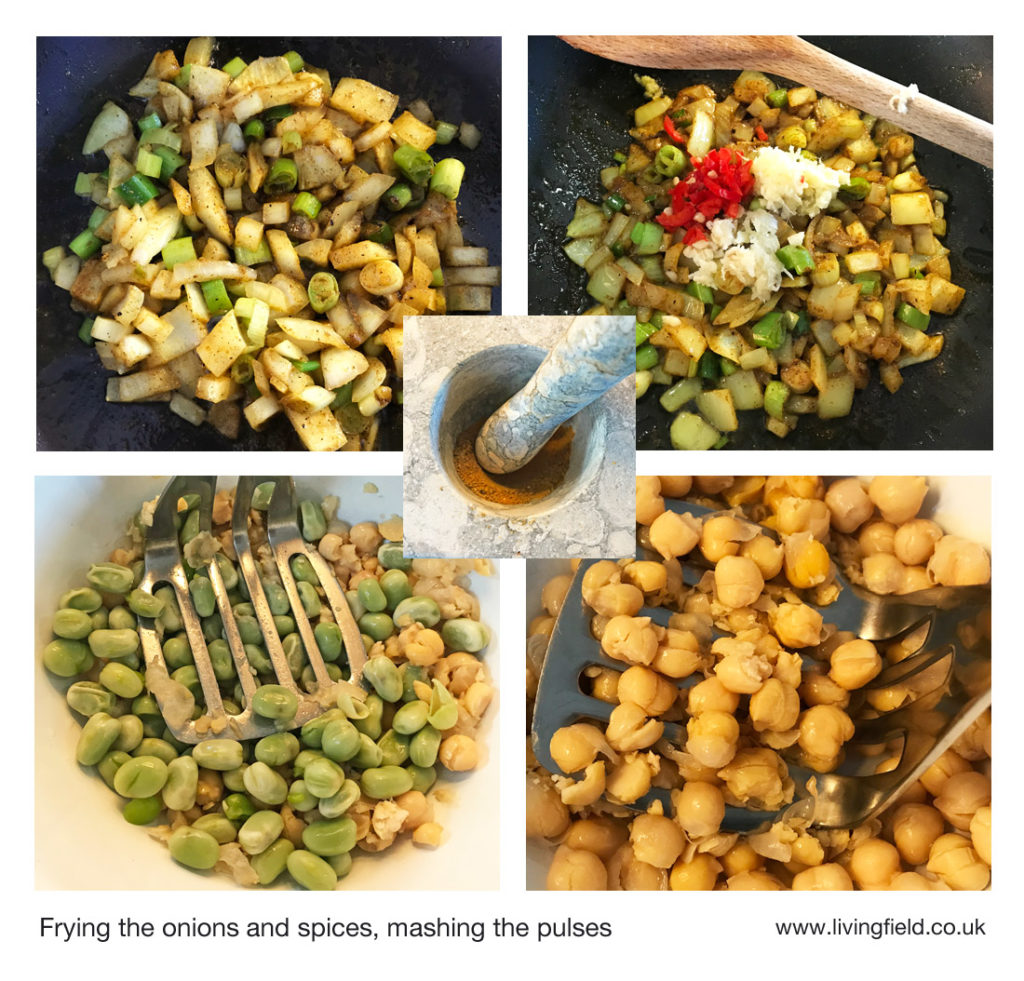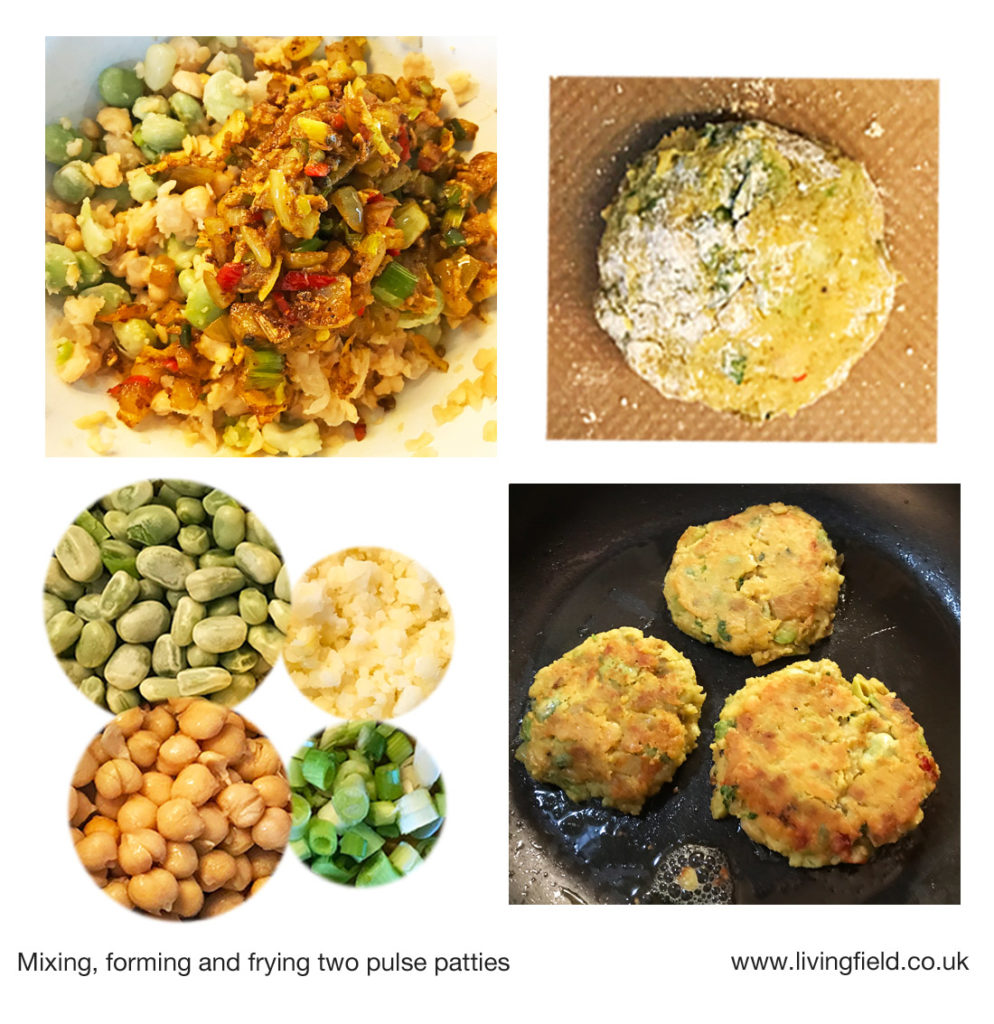More from our correspondent Grannie Kate ….. broad bean and chickpea ….. eat pulses ….. stay healthy …. cut pollution
“I first acquired a recipe for chickpea patties from an Indian student of Sayed Azam-Ali [1] in 1991 during a field trip to the Highlands of Scotland! I have adapted it to add in extra tasty baby broad beans but be careful not to overdo the spices, otherwise the flavour of the broad beans will be masked.
You could add peas to the mix as well if you wished, or other types of cooked bean according to the season and availability. These are highly nutritious, very tasty and filling! Serve with mixed leaves and maybe some peppers and tomatoes with a light drizzle of olive oil. This recipe makes about 10 patties.
What you will need
- 1 cup of baby broad beans, boiled for three minutes
- 1 cup of cooked chickpeas, from a tin
- 1 cup of seasoned mashed potatoes
- 2 spring onions plus one medium onion, finely chopped
- One garlic clove, grated
- Piece of ginger about 2cm square, grated
- Half a fresh red chilli, chopped finely and including the seeds
- 1/2 teaspoon of turmeric
- 1 teaspoon of garam masala
- 5 green cardamon pods, seeds removed and crushed
- Salt and pepper to taste
- 1 beaten egg for binding the mixture plus gram flour (chickpea flour)

What to do
- Start by preparing the spices. Grind the cardamom seeds in a pestle and mortar and then add the turmeric and garam masala, salt and pepper. Grind them all together.
- Add vegetable oil to a frying pan and when it is hot, add the spices. Fry for about half a minute then add the onions, garlic, ginger and chilli. Fry gently for around 5 minutes, stirring continuously and then remove from the heat.
- Lightly mash the chickpea and beans. Add them to with the potatoes to a large bowl and then add the fried onions and spices and mix loosely together with a fork. Add a beaten egg to bind the mixture together.
- Sprinkle the flour onto a chopping board, and also onto your hands to stop the mixture from sticking. Place a large spoonful of the mixture onto your hand and make a ball, then roll in the flour.
- Place each patty onto baking paper on a tray, cover and leave in the fridge for 30 minutes to firm up.
- Fry gently in a frying pan, turning each patty over until a glorious golden brown colour.

Notes from the editor
Thanks again to our correspondent Grannie Kate for this recipe.
[1] Now at Crops for the Future, Malaysia.
[2] Pulse crops such as broad beans and chickpeas are of the legume family and can be grown without nitrogen fertiliser, which if used to excess, is one of the most damaging pollutants of atmosphere and water.


